CES 2007 + iPhone
The thought of storing credit card or bank information on a cell phone is a scary one. After all, cell phones are notoriously easy to lose and/or break. Heaven forbid it is stolen and some thief makes off with your most sensitive information and makes purchases with your funds before you have a chance to suspend your account. According to the demos we saw this week, you can set aside at least some of those fears.
Near-field communications, or NFC, is simply a short distance radio technology that sends and receives information over a distance of about an inch. The tags measure about 1.5 by 1.5 inches and can store 1kb. There are other tags that can store 96 bits, which right now are far cheaper than the larger ones. Not Bluetooth and not RFID, it enables cell phones to become instant payment and info collecting devices in a number of different ways. We'll explain.
The most fascinating demo we saw was an integrated application on Nokia's 6131nfc phone, which we mentioned briefly in our CES Day 1 coverage. Starting with the basics, yes, the phone can be used for contactless payments. You're at QuickCheck, you forgot your wallet, you touch the phone to the reader and bang, your account is charged for the Gatorade and Lays potato chips that you needed to get you through the afternoon. The interface on the 6163nfc included all different levels of security that users can apply to the NFC radio for making payments, including password protection and more. To say it another way, your phone will not accidentally pay for some outrageous thing because you happen to wave it past a reader. And unless a thief steals your phone and is magically gifted at cracking passwords, no one else can use it or access your information.
This is by far the simplest and most rudimentary way to use NFC. The banking information itself can be tied to a credit card, a debit account, a checking account and you can store multiple accounts on the phone, giving you the freedom to pay with whichever account is best at that time.
The radios can be programmed with all sorts of different levels of interactions and we saw some pretty cool ones. Imagine your business card carrying your information electronically. Rather than trading cards, you simply tap your phone to someone else's card and pop, it instantly reads the card and adds the person's information to your contact database. Hate pairing your phone to a digital picture frame with Bluetooth? It's no longer a problem. The Nokia representative took our picture, tapped the phone to the digital frame, and the application automatically initiated the Bluetooth connection and transferred the image.
Because the NFC chips store very little information and are controlled by software applets you can download directly to your phone, the number of ways you can use NFC is virtually limitless. In Japan, where NFC enabled phones have been on the market for a few years, you can use your phone as a transit pass for trains or subways, as a work ID, and even as a key to open NFC enabled door locks, which you can now but for your home over there.
In speaking with a VISA representative, he said that their retail readers will reach full deployment in the U.S. within the next 18 to 24 months (by the way, that'll be 4 years behind our friends in Tokyo). We really think the potential here is unlimited. Being able to leave your wallet at home can be appealing. The day when we leave our houses with just our mobile phones is closer than you think.
You can see NFC in action here:
Or for more viewing and sharing options, check it out on YouTube or Google Video.


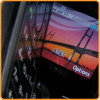 Video Tour: Samsung A717 & A727
Video Tour: Samsung A717 & A727
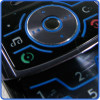 Review: MOTOROKR Z6
Review: MOTOROKR Z6
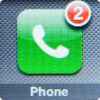 Review: iPhone
Review: iPhone
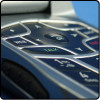 Review: Motorola ic402
Review: Motorola ic402
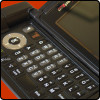 Samsung U740 Video Tour
Samsung U740 Video Tour
 Motorola ic502 Buzz
Motorola ic502 Buzz

